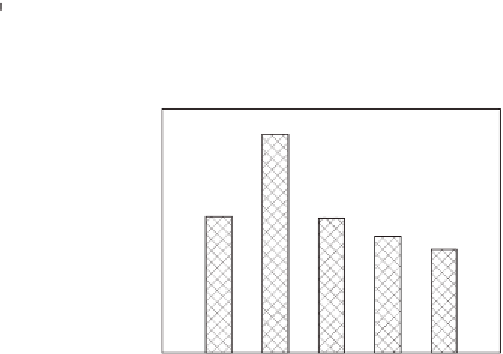Information Technology Reference
In-Depth Information
Figure 3. Performance under default setting
(a)
Average Response Time
(b) Breakdown of Query Hits
(c) Average Response Time for Broadcast Hits
ones that are difficult to get from both neighbors
and broadcast channel should be cached locally,
thus long time waiting is avoided. In prefetching,
the peers' cache space is refreshed with the most
valuable objects at each broadcast tick.
The performance of individual cache manage-
ment schemes PIX and PT are depicted in this set
of experiments to show that cooperative cache
management do help improve access latency. In
the remainder of this section, we only compare
the cooperative cache management schemes.
to see the performance of the schemes under
different extent of non-uniform broadcast. In
the experiments the access pattern of the mobile
peers does not change.
The results are depicted in Figure 4. It shows
that CPIX and ACP adapt to the non-uniform
broadcast better than DGCoca does: with the in-
crease of Δ, the response times of the schemes all
increase, but CPIX and ACP degrade slower than
DGCoca does. The length of the broadcast cycle is
∑(
DiskSize
i
*
DiskSpeedi
i
) where
DiskSpeedi
i
=((
m
-
i
)* Δ)+1,
m
is the number of
broadcast disk
s, and
1≤ i≤m
. During a broadcast circle the data objects
on
Disk
i
are broadcast
DiskSpeedi
i
times. When
Δ increases, data objects on the faster disk are
broadcast more frequently, and it becomes harder
Adaptability to Non-Uniform Broadcast
In this set of experiments, we study their adapt-
ability to non-uniform broadcast by varying Δ










































































































































Search WWH ::

Custom Search